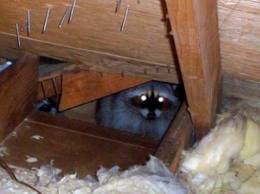 Raccoons have taken up residence in the attic of your home. You wonder how to remove raccoons so that they do not ruin your insulation and make a huge mess. It is important to deal with this problem early before they have babies in your attic. The picture on the left could be your home or anyone else’s home that has an infestation of these animals. They are very resourceful, smart, condition of dealing with humans and they will fight to protect their baby raccoons. You need to take all of this into account when you are trying to remove raccoons from your attic or anywhere else on your property.
Raccoons have taken up residence in the attic of your home. You wonder how to remove raccoons so that they do not ruin your insulation and make a huge mess. It is important to deal with this problem early before they have babies in your attic. The picture on the left could be your home or anyone else’s home that has an infestation of these animals. They are very resourceful, smart, condition of dealing with humans and they will fight to protect their baby raccoons. You need to take all of this into account when you are trying to remove raccoons from your attic or anywhere else on your property.
How to Remove Raccoons – Don’t Waste Your Time
The first thing we want to say is do not waste your time with all of the things you may find on the internet. We had raccoons in our attic and we tried the following to get rid of them:
- Loud noise and music
- Mothballs
- Animal urine
- Humane traps
None of these solutions which we found by searching on the internet worked. They are immune to loud noises and music, it bothered us more than them. The mothballs did not work at all, nor did the animal urine. (note this was a product you can buy at a local hardware store which is supposed to be the smell from their enemies). We also tried trapping and we were successful in trapping the younger inexperienced raccoons, however, the older adults were too smart and just would not enter the cage to get at the food. You can read more about raccoon traps on our website on other posts we have written.
After we had tried all of the above so-called solutions ourselves we finally turned to the experts for a solution on how to remove raccoons.
OutSmart the Raccoons
The thing you have to remember is that once a den has been created in your attic or anywhere else, even if you remove the current resident raccoons, other families in the area will be able to tell that the den is vacant and they will move right in unless you block the entrance securely.
If you block the entrance with the raccoons still inside you have a huge problem on your hands. At the very least they may die inside your attic and really cause a bad smell. They will try to get out and they might just tear a hole somewhere else in the roof, the side of your home, or worse into your home. If the young babies are inside the adult raccoons are outside, they will do everything they possibly can to get inside the den. this includes tearing a new hole in your roof or siding to rescue their babies. You will just have more damage to deal with a new hole to deal with.
The solution is to build a one-way trap door that allows them to get out but not back in!
One Way Trap Doors for Raccoons
Now it is important to only apply this solution when the young are old enough to leave the dean. Otherwise, you risk more damage to your roof or siding as the adults try to enter the den.
Building the one-way trap door when the young are old enough to get out is the best way to get rid of them and keep this family of raccoons out as well as all future raccoon families that might try to take over the vacant den.
Cover this entrance and all other possible entrances with coarse gauge chicken wire. Screw nail this wire into the roof so that it cannot be torn away. Use silicone caulking that is waterproof around all points where you have to penetrate the roof with screw nails. This will prevent water leakage into your home.
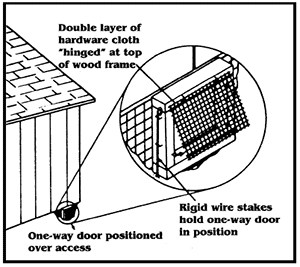 The trap door needs to open out words and not inwards. With this approach the raccoon can find its way out but not back in. the picture on the left shows the construction of a one-way trap door on the side of a building, however, the same approach can be used on your roof as well.
The trap door needs to open out words and not inwards. With this approach the raccoon can find its way out but not back in. the picture on the left shows the construction of a one-way trap door on the side of a building, however, the same approach can be used on your roof as well.
Hire Professionals
Note that if you are not a do it yourself type of person or you do not like to get on the roof, hire a professional to build this trap door. Also, you really should hire animal control experts who are skilled in this type of thing. They will deodorize your attic as well and they will repair any damage the raccoons may have caused. If the raccoons have been in your home for a long time, you may have to replace all of the insulation as well. It can be soaked with urine and feces. Again hire experts who know what they are doing. The feces from raccoons can cause humans to become very sick.
Once you are sure that all of the raccoons have left via the one-way trap door, you can replace the trap door with a permanent wire mesh cover. This will keep all animals out including squirrels and birds out of your attic.
This is by far the best solution we have found on how to remove raccoons from the attic of your home. The same applies to other locations around your home or business. For more information about how to remove raccoons, click here.




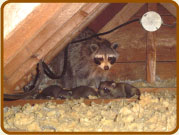




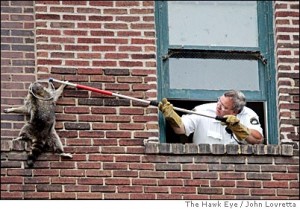


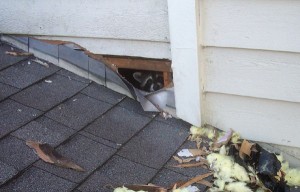
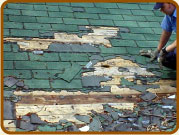
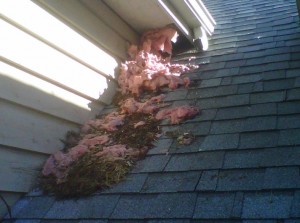

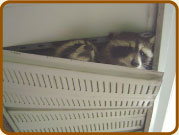

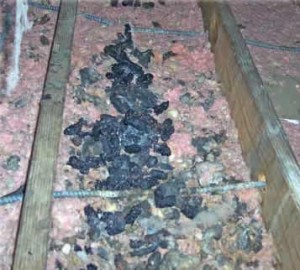
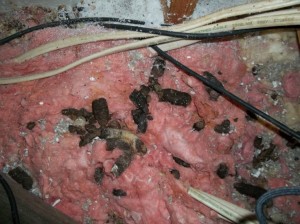
 blindness, loss of muscle control, and even death.
blindness, loss of muscle control, and even death.